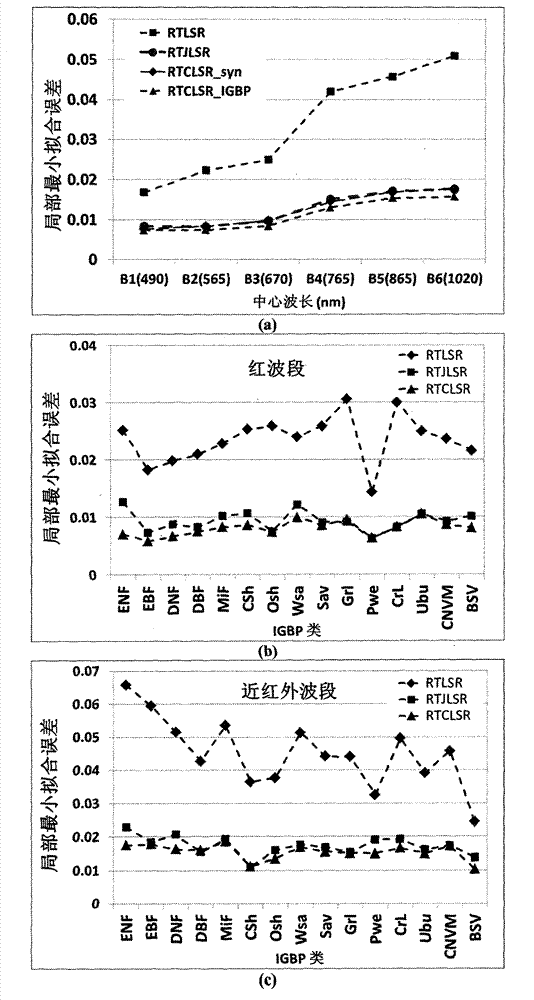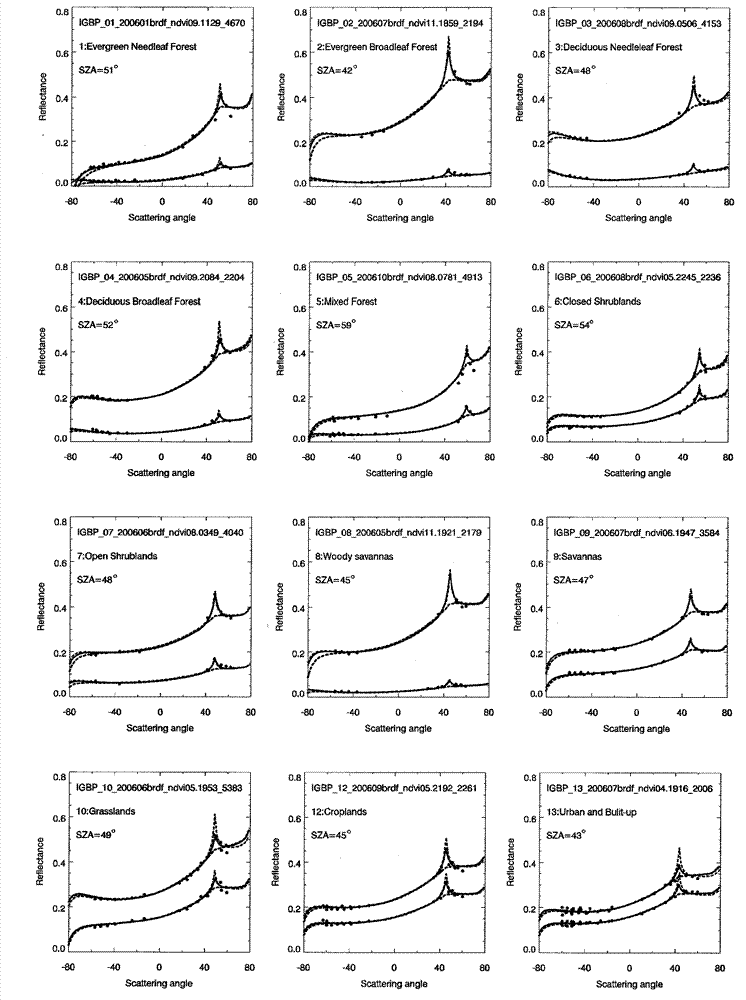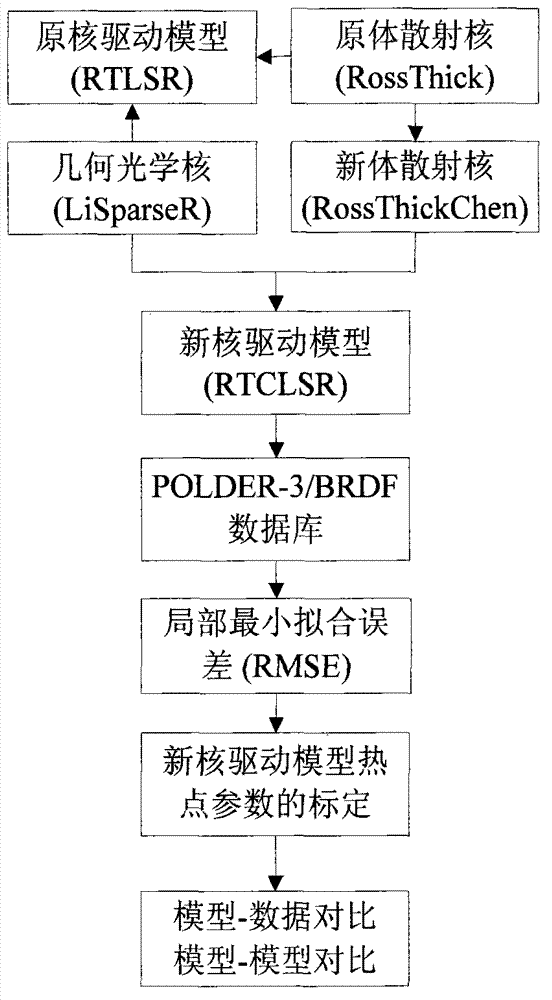Method for improving business nuclear drive bidirectional reflectance distribution function (BRDF) model hot spot
A kernel-driven model and reflection distribution technology, applied in the field of spatial information, which can solve the problems of increasing computational complexity, not considering hot spots, and losing physical meaning of isotropic scattering parameters.
- Summary
- Abstract
- Description
- Claims
- Application Information
AI Technical Summary
Problems solved by technology
Method used
Image
Examples
Embodiment 1
[0045] In one configuration with Intel(R)Core TM2.5GHz4 processor, 4G memory, and ATI Radeon HD5670 graphic card computer have been implemented. Taking the multi-angle data of airborne CAR and the multi-angle data of onboard POLDER as examples, this method is used to correct the RTCLSR model for the above data Carry out fitting, adopt RTLSR model and RTJLSR model fitting simultaneously to carry out direct and indirect verification of the present invention ( figure 1 ).
[0046] Contrasting Protomer Scattering Kernel K RT and the volume scattering kernel K developed by predecessors RTM And the volume scattering kernel K corrected by the present invention RTC ( figure 2 ) It can be seen that the volume scattering kernel K corrected by the present invention RTC By adjusting the two hotspot parameters C 1 / C 2 , is more sensitive and flexible to changes in hotspots; compare the local minimum fitting errors of the three models on the 6 bands of spaceborne POLDER data in the...
PUM
 Login to View More
Login to View More Abstract
Description
Claims
Application Information
 Login to View More
Login to View More - R&D
- Intellectual Property
- Life Sciences
- Materials
- Tech Scout
- Unparalleled Data Quality
- Higher Quality Content
- 60% Fewer Hallucinations
Browse by: Latest US Patents, China's latest patents, Technical Efficacy Thesaurus, Application Domain, Technology Topic, Popular Technical Reports.
© 2025 PatSnap. All rights reserved.Legal|Privacy policy|Modern Slavery Act Transparency Statement|Sitemap|About US| Contact US: help@patsnap.com



